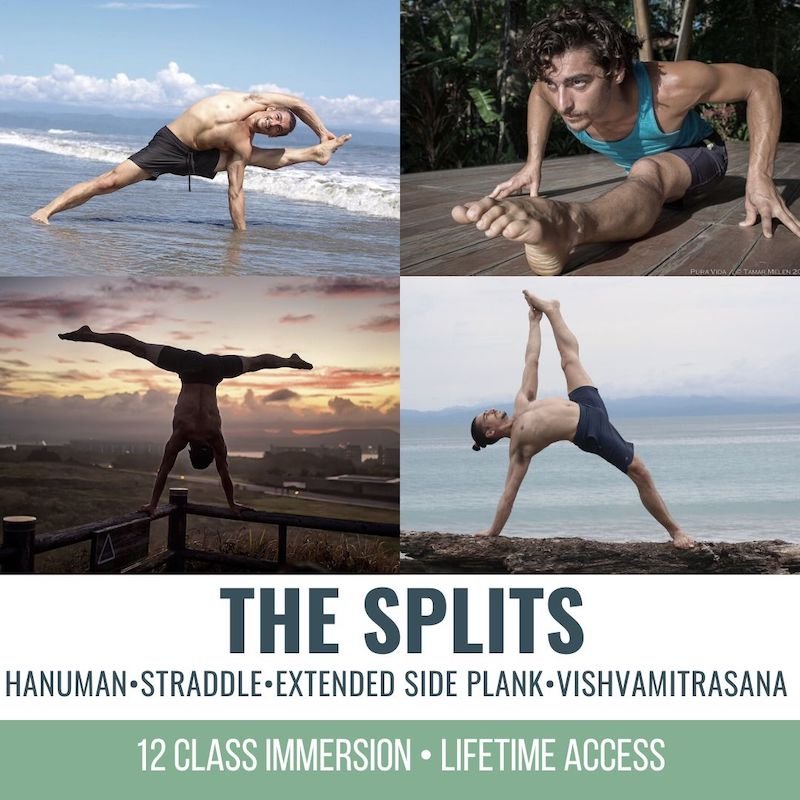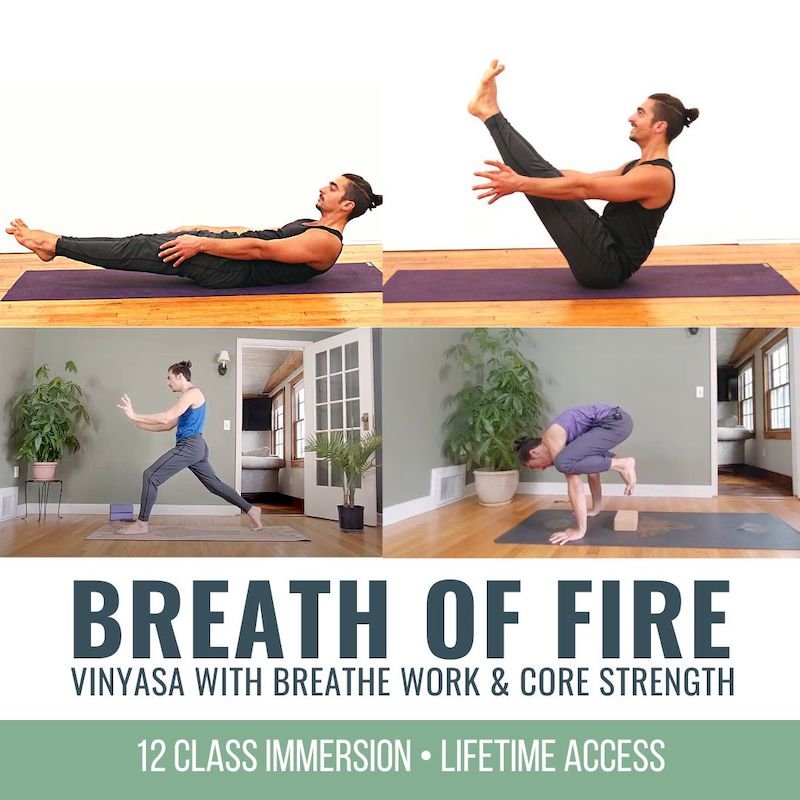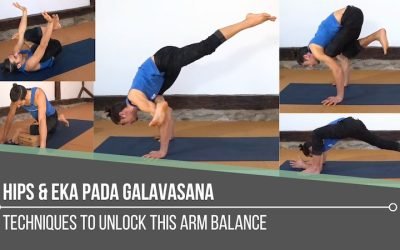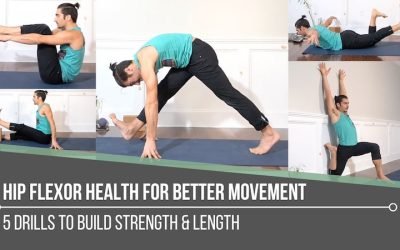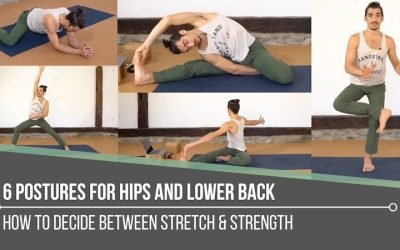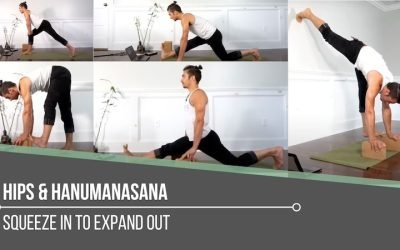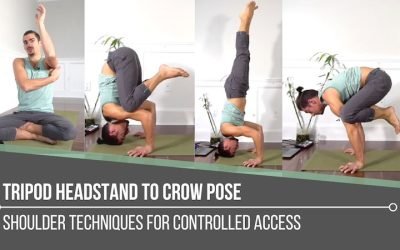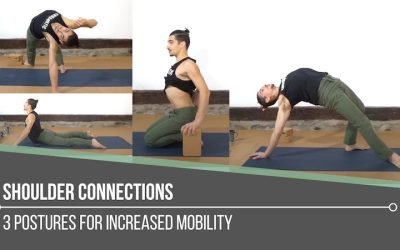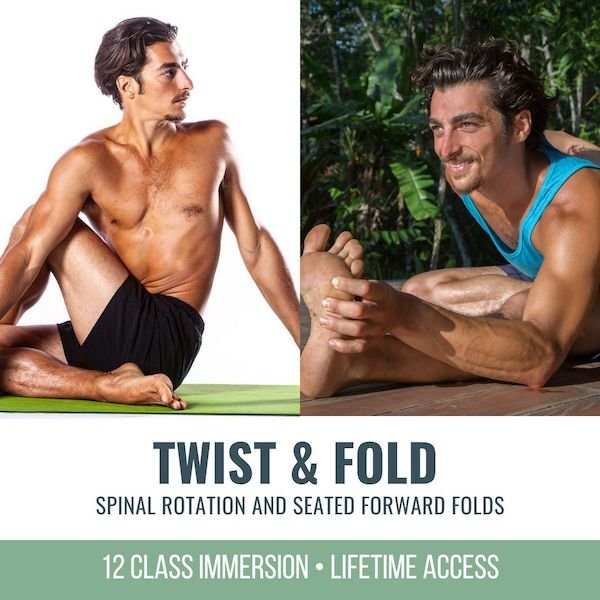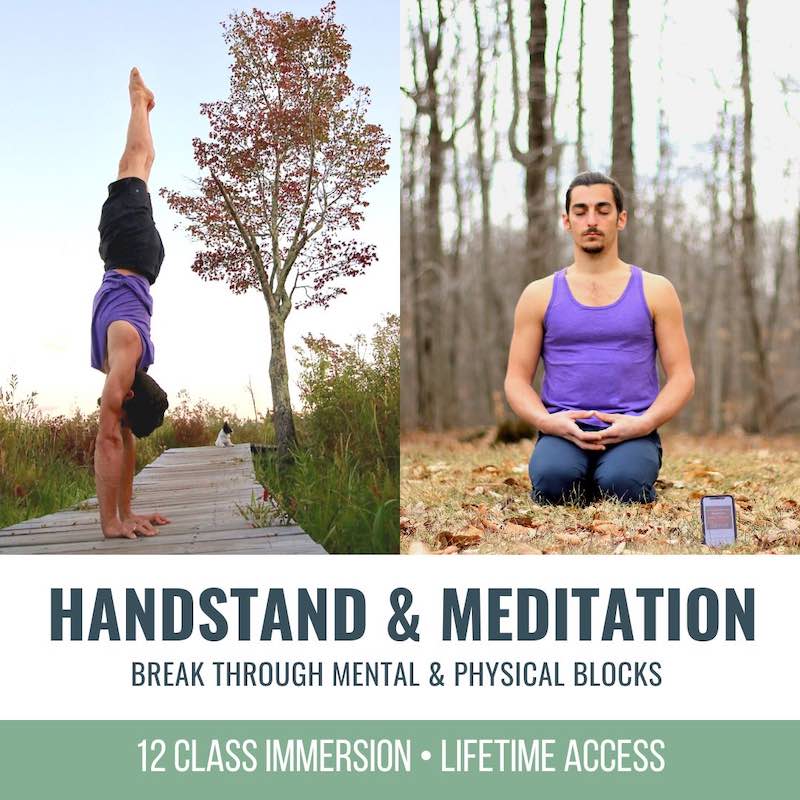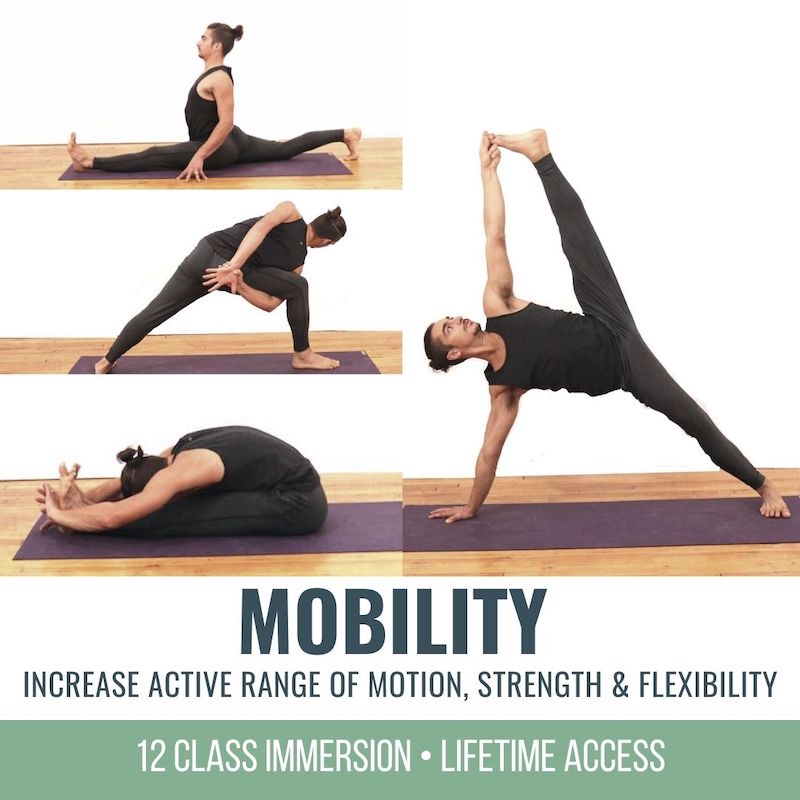Hips and Eka Pada Galavasanaflying pigeonHIPS AND EKA PADA GALAVASANA Depending on where we are in our asana practice journey, arm balances may feel a little overwhelming. It can be difficult to know where to start. Instead of thinking about the final destination, we...
Strengthen For Splits
Strengthen for Splits
Variations for Increased Flexiblity
hanumanasana
STRENGTHEN FOR SPLITS
If the Splits (Hanumanasana) had a personality, it might be one of the most vocal in the room. Aesthetically, it’s quite bold. The shape of the posture makes it evident that it requires a great deal of flexibility. In order to acquire the right amount of flexibility, you must strengthen for Splits. But if flexibility means to lengthen muscles and strengthening contracts muscles, how is this approach effective? In today’s video, Matt shares how employing techniques such as the facilitated stretch help increase flexibility while strengthening. Not only do you prepare your body more effectively for flexibility, but you also bring your body closer to balance. Because Splits is a deep posture, you need to be shrewd in your approach. As always, Matt offers cues that are both intricate and systematic, allowing you to safely explore while increasing your flexibility at the same time.
THE SPLITS
- Improve flexibility of hamstrings, adductors, hip flexors, and glutes
- Hanumanasana Splits
- Center Splits
- Vishvamitrasana
- Standing Splits / Ekapadasana
- Extended Side Plank / Vashisthasana
- Straddle entries for inversions, with modifications for all levels
- Moderate Vinyasa style with alignment, technique, and biomechanics
- Sequences are anatomically informed and carefully crafted
- 12 Classes: All levels appropriate
- Lifetime unlimited access to all
- Attend the livestream OR practice the replays any time that’s convenient for you
$148.00
FACILITATED STRETCH
First, what is a facilitated stretch? If you’ve been practicing with Matt for some time, you’ll know that this is a technique that he frequently utilizes in his classes. This is because it allows you to build strength and flexibility at the same time. A facilitated stretch occurs when a muscle is engaged while in a lengthened position. It’s essentially a conversation that takes place from the brain to the muscle and the Golgi tendon organ, which sends a message back to the brain about the amount of tension that’s taking place. When that happens, the brain recognizes the amount of engagement and sends a message back to the body to release the tension in the muscle. Instead of forcing a stretch, your body recognizes that it is in control and therefore safe to respond in kind when flexibility is required.
WATCH THE VIDEO
STRENGTHEN FOR SPLITS: 2 VARIATIONS FOR INCREASED FLEXIBILITY
VARIATION 1: PUSH, PULL, TURN
To strengthen for Splits, it’s important to know the end range of your flexibility. Pull back from where you normally settle into as you set up this variation, so as to successfully implement a facilitated stretch. Being able to strengthen for Splits means moving away from your tendencies. As you’ll see in the video, there are opportunities to “push, pull, and turn” within your exploration. These actions will both change the level of sensation you experience and inform your next steps. For example, turning your pelvis closed might increase a sensation that provides the opportunity for you to press your front heel down and forward while pulling your back knee forward. These actions create a facilitated stretch for the hamstring in the front leg and the hip flexors of the back leg.
200 HOUR ONLINE TEACHER TRAINING
GET CERTIFIED & DEEPEN YOUR YOGA PRACTICE
- Deepen your yoga practice
- Build confidence speaking in front of groups in person and online
- Learn foundational class structures and templates
- Learn techniques for a wide range of yoga postures
- Get certified and highly qualified to teach yoga
- Yoga Alliance Globally Recognized Certification Program
- SPRING ENROLLMENT OPEN! Training begins June 1
VARIATION 2: LEAN IN
Now, in the 2nd variation, the key action that gets layered on is to lean forward. Even though more flexibility in the hamstrings is required here, you are still working to develop their flexibility even further. Again, Matt encourages you to work at roughly 60%–70% of your end range. The act of leaning forward demands more of the hamstrings of the front leg, so continue to check in with what depth is appropriate. While you can begin to lean into more of a stretch sensation by going a bit deeper (once you’ve strengthened), going deeper does not mean that you compromise strength and integrity. If you notice a laxity in some areas of your Splits, you can do things like curl your back toes under. This keeps the pelvis closed and maintains more activation in the hip flexors of your back leg.
300 HOUR ONLINE TEACHER TRAINING
GET 500 HOUR CERTIFIED AS A MASTER TEACHER
Master your skill set as a teacher through refined techniques, anatomy, biomechanics, sequencing, philosophy, meditation techniques, theming, yoga business, and much more!
- Get 500 hour certified
- Learn anatomy, biomechanics, asana techniques
- Expand your teaching skills
- Masterful sequencing and verbal delivery
- Learn meditation and breathwork techniques
- Transformative tools: theming, dharma talks, satsang
- SPRING ENROLLMENT OPEN! Training begins June 1
CARVE A NEW PATH
An intense posture like Splits will really speak to you. It will expose your tendencies, which may be hard to face. Often, the familiar path is to lean into the areas that feel open. But in order to strengthen for Splits, it’s imperative that you lean into the more “challenging” areas within the posture. Pushing beyond your limits is not the answer here; what is meant is that moving carefully minimizes the risk of injury. When this happens, you will not only come closer to the posture in the short term but also develop more balance in your body in the long term.
Matt’s Splits Immersion will guide you in creating “intelligent flexibility” in your hamstrings, adductors, hip flexors, and glutes. Carving a new path and creating new patterns means more confidence in how your body moves, both on and off the mat!
The 200 Hr. Teacher Training: Click Here to See the Next Start Date
The 300 Hr. Advanced Teacher Training: Click Here to See the Next Start Date
Article by Trish Curling
Video Extracted From: Mobility Immersion
BREATH OF FIRE
- Moderate Vinyasa-style classes
- Core strengthening & integration
- Master your breath with pranayama practices
- Access your core in arm balances, heart openers, twists, forward folds, inversions, and more
- Learn where and how to breathe in challenging postures
- Each class will include one pranayama (breathwork practice) and several core strengtheners
- Access your core muscles: deep, superficial, anterior, posterior, and lateral
- 12 Classes: All levels appropriate
- Lifetime unlimited access to all
- Attend the livestream OR practice the replays any time that’s convenient for you
$148.00
Continue Learning
Hips and Eka Pada Galavasana
Hip Flexor Health For Better Movement
Hip Flexor Health for Better MovementstretchHIP FLEXOR HEALTH FOR BETTER MOVEMENT Healthy hip flexor muscles are associated with both stretch and strength. Although we’re going to focus more heavily on strength in this article, always note that both strength and...
6 Postures For Hips and Lower Back
6 Postures for Hips and Lower Backstretch6 POSTURES FOR HIPS AND LOWER BACK When we're interested in learning about postures that help us with our hips and lower back, it’s simply not good enough to find a video or practice that says that certain poses will help with...
Hips & Hanumanasana
Hips & HanumanasanasplitsHIPS & HANUMANASANA What a posture! Hanumanasana is such a beautiful expression of what is possible in our physical yoga practice. However, it’s not about “achieving” Hanumanasana but about the exploration of what is possible in terms...
Tripod Headstand To Crow Pose
Tripod Headstand to Crow for Controlled AccessinversionsTRIPOD HEADSTAND TO CROW POSE When exploring an inversion like Tripod Headstand, the shoulder muscles become part of the primary focus. Tripod Headstand on its own can be challenging enough, but adding a...
Shoulder Connections
Shoulder Connections 3 Postures for Increased Mobilityshoulder stabilitySHOULDER CONNECTIONS To increase mobility in our shoulders, we must first understand how they move, so we become more connected with their function and how they inform a variety of yoga postures....
THE FREE TECHNIQUE PACK
When You Subscribe, You Will Get Instant Access to
- the Technique Pack: 15 yoga pose breakdowns
- exclusive online course discounts
- exclusive blogs and videos

